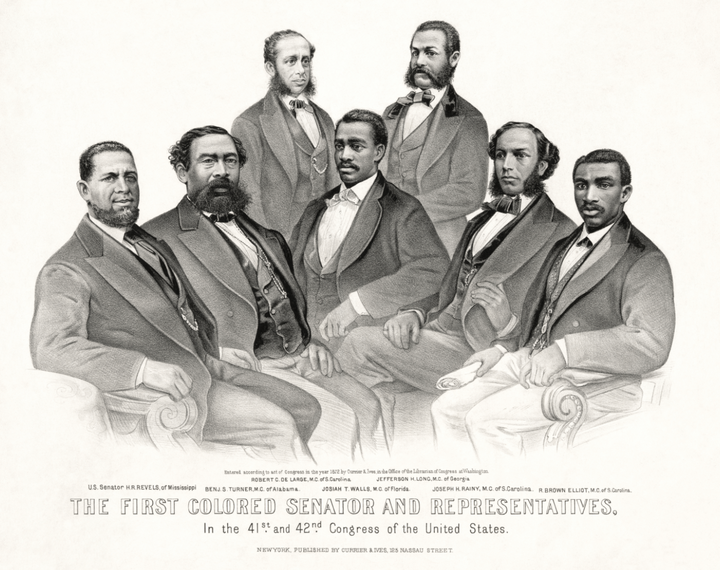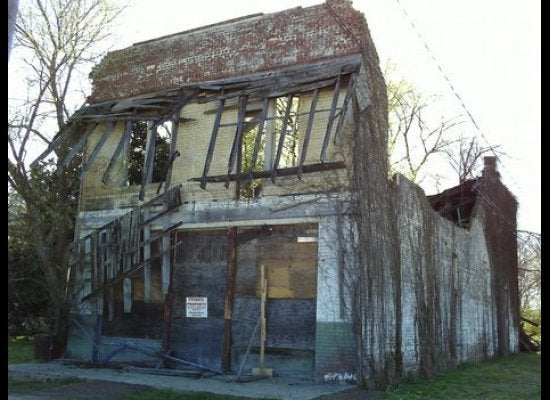
The Rev. Martin Luther King Jr.’s base in Birmingham, Alabama. A bus station where segregationists attacked Freedom Riders. These civil rights sites of the 1960s, etched in black-and-white images in our memories, are naturals for selection as national monuments. Less obvious, but perhaps more powerful in our nation’s history, is President Barack Obama’s designation of Beaufort, South Carolina, a cradle of Reconstruction.
Amid Obama’s last-minute flurry of executive orders and regulatory actions ― pardons, commutations, Arctic drilling bans ― Thursday’s dedication of the Beaufort monument seemed to fall in the shadow of the other two dedicated that day: the motel that served as King’s headquarters in the final push for the Voting Rights Act and the Anniston, Alabama, Greyhound station where a bus was firebombed in 1961.
The monument in Beaufort commemorates a segment of the civil rights struggle that is far less prominent in American history.
Beaufort’s Reconstruction Era National Monument will commemorate this lesser-known period (about 1865 to 1877) following the Civil War. For instance, how many Americans know the name of Hiram Revels of Mississippi, the country’s first black senator? At a time when the black population of the American South was still struggling to come to terms with life in the post-emancipation era, Revels belonged to the wave of black men who sought and won office across the region. They won seats in the Senate, in the House of Representatives, in state legislatures, and in hundreds of local and municipal posts across the South.
(Reconstruction is the subject of a new Huffington Post podcast, produced with rapper Killer Mike, that will launch in the next few weeks. Sign up here to get an email when it drops.)
So why doesn’t Reconstruction get much attention? If you take as your starting premise that mainstream history remains largely written by white Americans, that question isn’t so hard to answer. There are few white heroes in this story (no Lyndon Johnsons), and many of the era’s greatest accomplishments in civil rights were eventually rolled back. The country’s (and arguably the world’s) first experiment in genuinely interracial democracy was strangled in its cradle ― or, given the decade-plus it survived, its childhood ― destroyed by a combination of political sabotage and terrorism. In the 1860s and ’70s, groups like the Ku Klux Klan, the White Leagues, and the Redshirts arose and conducted campaigns of violence aimed at intimidating Republican politicians in the South, especially their attempts to build black political power.
“You were taking your life in your hands by becoming a black political figure,” says Columbia University history professor Eric Foner. “This group of black political leaders suffered more violence, whether it’s murder, or arson of their homes or whippings, than any group of political leaders I can think of in American history. Whatever the acrimony of politics right now, you don’t have armed men going after members of the legislature and whipping them or shooting them. We’re not quite at that level yet. But they were in Reconstruction.”
By the end of the 19th century, white dominance in the South (or “home rule,” as it was euphemistically called) had been restored. Jim Crow was the law of the land, and the country would not see large-scale black electoral participation until the civil rights movement of the mid-20th century. In many ways, the drought in black political power lasted even longer than that: When Tim Scott was elected in South Carolina in 2014, it was the first time Southern voters had sent an African-American to the Senate since 1881. (Senators in the 19th century were actually elected by state legislatures, not directly by voters, but you get the point.)
In recent months, Beaufort has mounted a vocal campaign to persuade Obama to designate a monument to Reconstruction there. Why Beaufort? The town and its environs occupy a unique place in 19th century history: In the fall of 1861, early in the Civil War, Beaufort County became one of the first places in the South to fall to the Union. Although it was precariously situated between Savannah and Charleston, two of the most important Confederate port cities, the concentration of black population in coastal Beaufort made it a hotbed of pro-Union sentiment, and the ideal location for Union naval forces seeking anchorage. Confederates and plantation owners had fled the region, leaving behind their homes, their land, and most importantly, their former slaves.
Over the next few years, the region bore witness to one of the most extraordinary untold chapters of American history. Black leaders and white abolitionists saw an opportunity to demonstrate to white society (especially to skeptical Northerners) that blacks were capable of citizenship: that they could participate in the free labor economy, establish their own educational institutions and live as any other members of society. Northern abolitionists ― ministers, teachers, doctors ― traveled to Beaufort County to lend their expertise. The endeavor came to be known as the Port Royal Experiment. Like the Reconstruction as a whole, it succumbed to political reaction; after the assassination of President Abraham Lincoln in 1865, Republicans began to lose their stomach for radical programs of land redistribution, and the Port Royal Experiment was abandoned.
Beaufort was also the birthplace of arguably the most incredible political figure of the Reconstruction era. Robert Smalls was born into slavery in 1839 and won national fame in 1862 when he commandeered a confederate naval vessel, and, under cover of darkness, piloted it out of Charleston harbor and delivered it to the Union. He ended up meeting with Lincoln and influencing his decision to allow black soldiers to serve in the Union Army. Smalls became the first black man to command a U.S. naval vessel. He then had a long career in Congress, with Beaufort as his political base. Many of the historic sites that will comprise the new monument relate to Smalls and his life.
“Unfortunately, African-Americans haven’t always been in control of their stories,” says Michael Boulware Moore. Moore is the president and CEO of the International African American Museum in Charleston, South Carolina. He’s also the great-great-grandson of Smalls. “And so stories like Robert Smalls’ just haven’t gotten out. Now over the last 15-20 years, certainly more people know of him and his accomplishments. But I grew up in Boston, and I think about Paul Revere ― who performed a valiant, historical service ― but he didn’t do anything close to what Robert Smalls did. But yet every child in this country learns about Paul Revere. I think [Smalls] still is under-exposed, but that’s changing year by year.”
“I think for a lot of people, the story of Robert Smalls really hasn’t fit their narrative,” adds Moore. “In the South to this day, there are pockets where Robert Smalls is persona non grata because he embarrassed the Confederacy, and they don’t want to talk about it.”
It took a very long time for Reconstruction to shake off its accumulated historical dust and assume a prominent place in the canon of American history. It’s still not there, really, but the popular conception of that era has made strides since a century ago, when its image was the one given to us by D.W. Griffith in his silent epic “The Birth of a Nation.” In this view, Reconstruction was undertaken by vengeful Northerners as punishment for the South’s independence of spirit. The success of the Democratic Party in banishing the Radical Republicans from the South was a victory to be celebrated. But most tragically consequential was the image this school of historical thought gave of the era’s black leaders. Black politicians were childlike, unintelligent, corrupt, and preoccupied only with their own enrichment. It posited too that northern Republican carpetbaggers cared nothing for the rights of blacks, and saw them only as pawns in their political campaign to subjugate the former Confederate states. Black political power, which during Reconstruction was substantial, was fundamentally illegitimate.
“The whole idea that your former slaves were now passing laws which white people would have to obey was completely anathema to white Southerners,” says Eric Foner. Foner is generally credited as one of the most important figures in the late 20th century Reconstruction revisionism that swept away the “Birth of a Nation” school of thought, and he recently co-wrote a New York Times editorial arguing for the establishment of the Beaufort monument.
“By the way,” he adds, “it’s not all that different from how so many white people view President Obama 150 years later. There are still people who can’t accept the fact that he’s actually an American and entitled to be president.”
There’s only so much that a monument can do to affect people’s historical attitudes, but anyone who has lived or traveled in the American South knows that monuments honoring 19th century figures have a decidedly pro-Confederate slant. Perhaps the new monument in Beaufort will begin to reverse that trend. The removal of the Confederate flag from the South Carolina statehouse and the raging debate over removal of Confederate statues in New Orleans suggest that attitudes toward history may be changing. If current trends continue, we might be on the verge of a Robert Smalls/Reconstruction revival.
In a recent interview, the director of the 2016 feature film “Free State of Jones” suggested that Smalls’ story would make a good movie. For now, we can revel in watching the first black president establish a monument to his 19th century forebears in the heart of the former Confederacy.
CORRECTION: Due to an editing error, an earlier version of this article said Freedom Riders were attacked by anti-segregationists. The attackers were segregationists.

